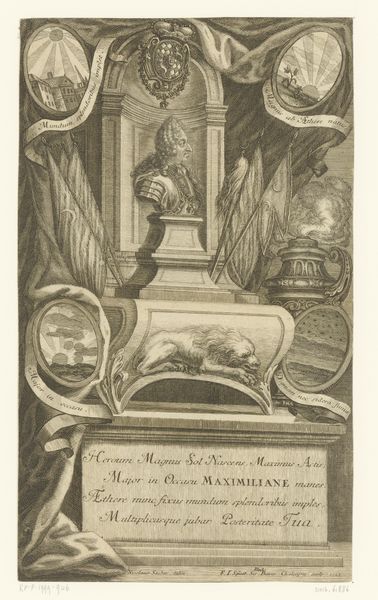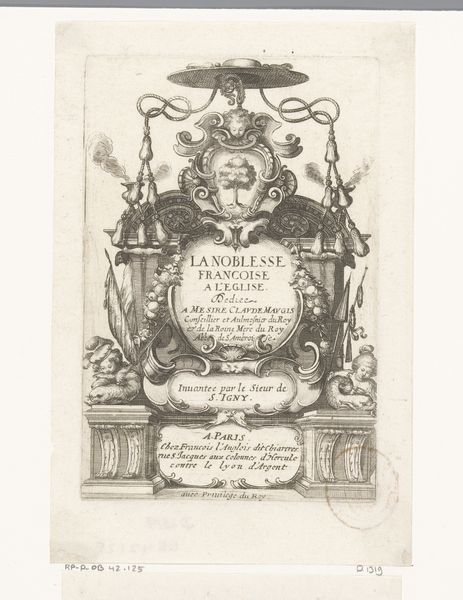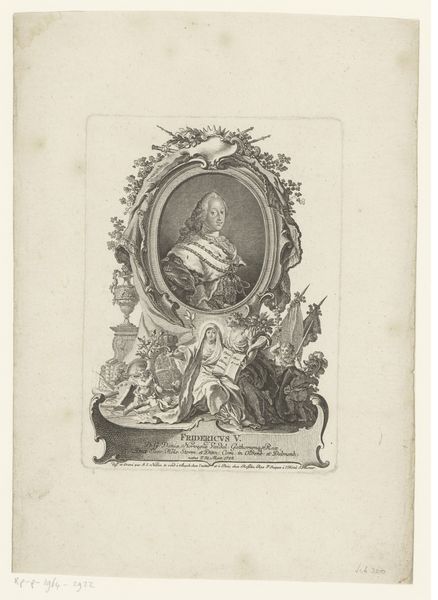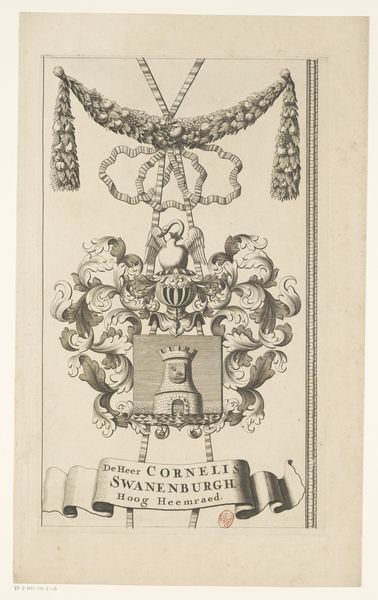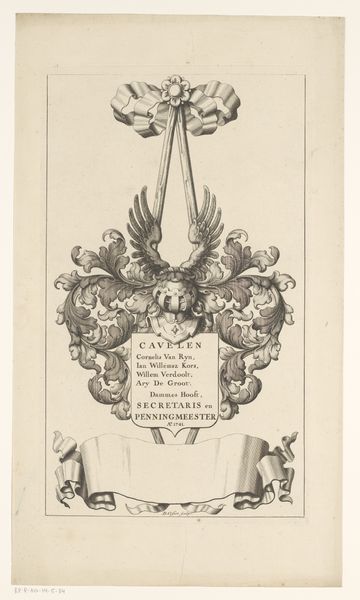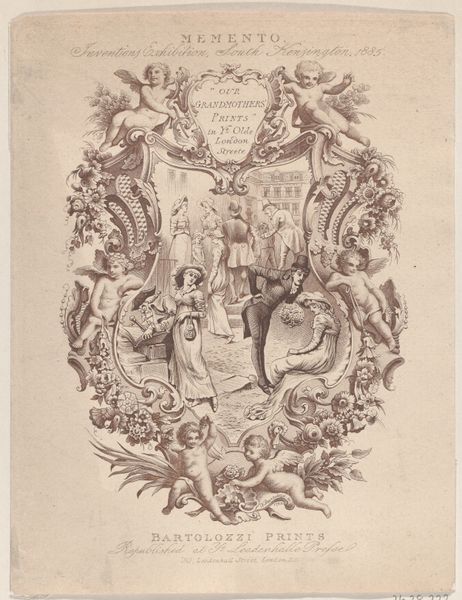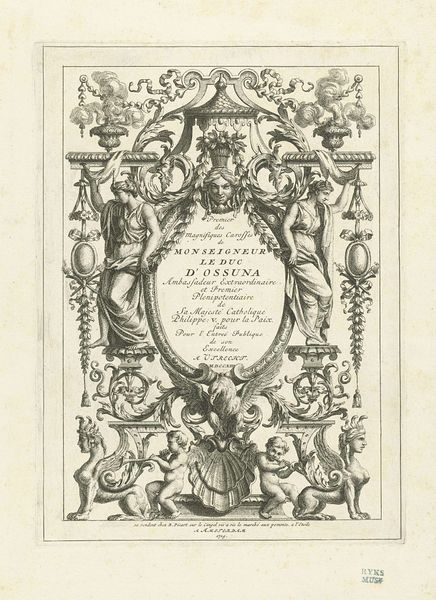
print, etching, engraving
#
baroque
# print
#
pen illustration
#
etching
#
old engraving style
#
figuration
#
history-painting
#
engraving
Dimensions: height 146 mm, width 94 mm
Copyright: Rijks Museum: Open Domain
Curator: Look at the exquisite detail in Abraham Bosse’s "Cartouche met een Amor drijvend op zijn pijlenkoker," dating from 1635. It’s an etching and engraving currently housed at the Rijksmuseum. Editor: It’s immediately striking how this relatively small print achieves such a monumental feel through its elaborate framing and cascading elements. The composition almost bursts with life. Curator: The figure of Cupid here speaks volumes. Bosse has captured him almost casually afloat atop his own quiver, suggesting the effortless power of love and desire. It feels like a playful interpretation of a profound force. Editor: Yes, and technically, observe the delicate cross-hatching! The artist's command of line and texture truly brings a sense of volume to this etching. It also offers a curious contrast to the inscription below and the illustration within the cartouche. Curator: I'm particularly drawn to the inscription, it sits as the base. The cartouche device itself symbolizes something beyond just artistic creation. In this period, a cartouche was often a statement, a declaration of a particular allegiance, style or aspiration. Editor: Absolutely, and it invites questions: how does it relate to the literary figures depicted within the scene? It prompts consideration of visual cues to its meaning—a puzzle engaging with perception and the artwork's intellectual project. Curator: Considering this piece, I am again reminded of how visual culture is deeply interwoven with social values, particularly during the Baroque period. Each element invites exploration into broader cultural narratives about love and purpose. Editor: A wonderful summation. I have truly appreciated examining this piece with you—a reminder that through an approach considering both technique and underlying narratives we gain so much more than simply visual data.
Comments
No comments
Be the first to comment and join the conversation on the ultimate creative platform.
